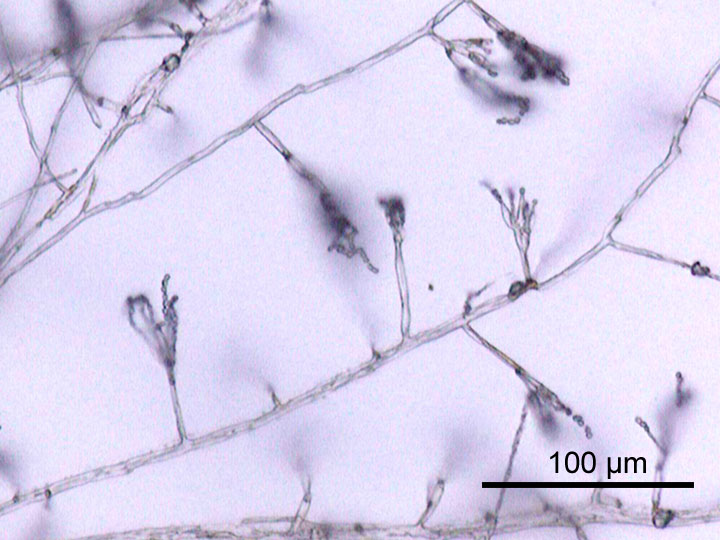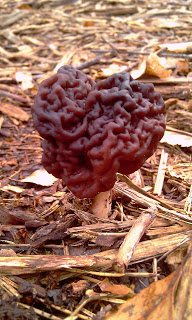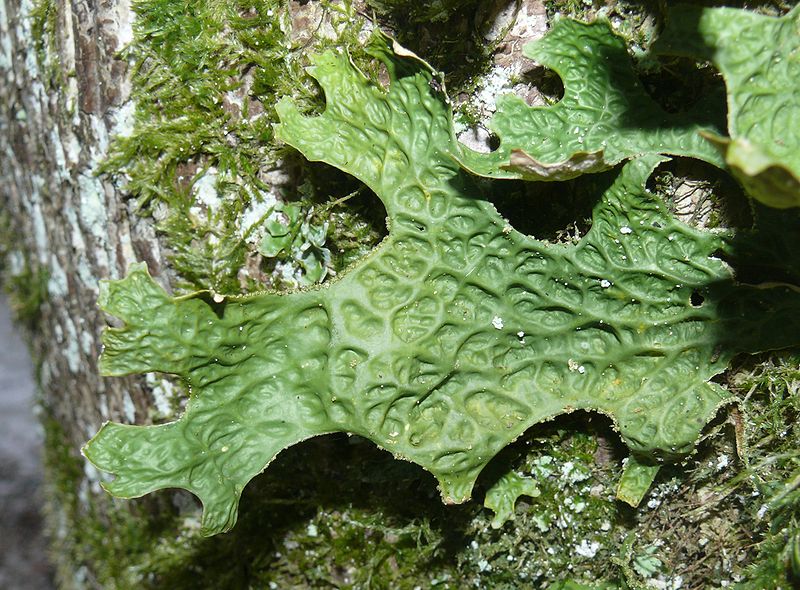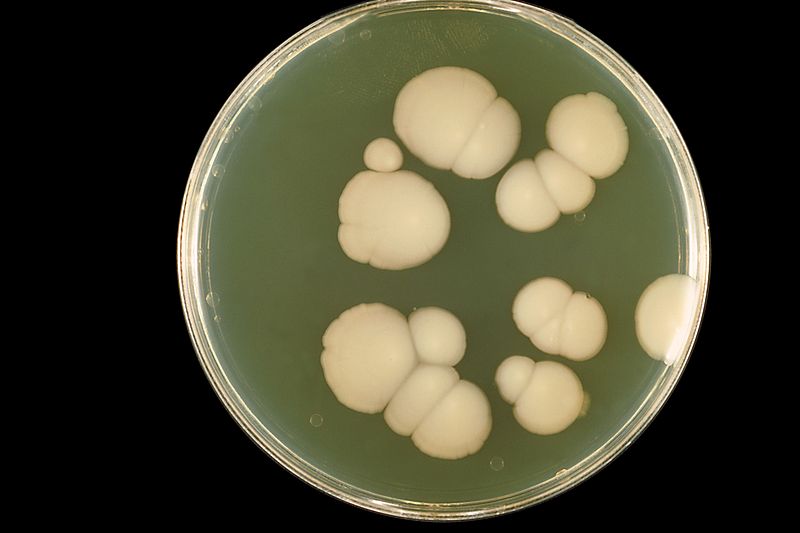Fungi and McDonald's
Fungi might be more closely related to
everyone's favorite fast food chain than most people know.
No, there isn't mysterious fungi in McDonald's food (that I know
of). So before you freak out and call the USDA, know that their
similarity lies in their hours of operation. Since fungi lack chlorophyll, they aren’t dependent on
light. This allows them to grow in the dark,
in any direction, through things like dead logs, and even inside other organisms.
Fungi are heterotrophic, meaning they don’t make their
own food.
Fungi are known
for being decomposers of dead organic material.  They use thread-like structures called hyphae (right) to take in
nutrients. The hyphae are a network of fibers
that forms the mycelium, a structure similar to the
root system of a plant. This system, like a good
McDonald's, is active 24 hours a day!
They use thread-like structures called hyphae (right) to take in
nutrients. The hyphae are a network of fibers
that forms the mycelium, a structure similar to the
root system of a plant. This system, like a good
McDonald's, is active 24 hours a day!
When a fungus gets
nutrition from a dead organism, it is classified as a
saprophyte. These types of fungi are
important in recycling carbon, nitrogen, and minerals in the
environment. False morels are classified as saprophytes.
This type of fungi is known for decomposing, but just what does
it decompose?
Gyromitra esculenta grows on dead trees, wood chips, or
fallen leaves, like in the picture on the right from
blogspot.com. They get their nutrition from the plant's
cell wall components, the soil, and from animal waste.
Saprophytes take polymers like cellulose, lignin, and
hemicellulose found in cell walls and break them down into
simple sugars and amino acids. They return some of these
products to the soil, where plants and microorganisms can use
them. Hence, they are often designated as nature's
recyclers.
Once the mushroom gets the glucose, they do much the same
thing we do to get nutrition from it. ATP is made by
oxidative phosphorolation, which is the process mitochondria go
through to make energy. It includes glycolysis, the Krebs
cycle, and the electron transport chain.
Dead plant material provides a good source of carbon and
amino acids, but what about other nutrients? Inorganic
compounds in the soil can be converted to forms of nitrogen,
phosphorous, and sulfur mushrooms and plants can use. The false morel
can also get nitrogen from amino acids. In fact, they can
use proteins as efficiently as glucose because they get
nitrogen, carbon, and sulfur from them. Another place they
get components necessary for growth is herbivore waste.
It might seem gross to you, but dung full of vitamins, minerals,
and growth factors is like a smorgasbord to fungi.
Unlike saprophytes, parasitic fungi feed on a living organism.
An example of a fungal parasite is
Candida
albicans, which causes yeast infections (below,
right).
Mutualistic fungi have a symbiotic
relationship with another organism that is beneficial to both.
A lichen (below, left) is a mutualistic relationship between a fungus and an
algae or cyannobacteria. More information about lichens
can be found
here.
Lastly, there are commensalist fungi in a symbiotic
relationship that is only beneficial to one of the species
involved. Fungi from the class trychomycetes often
undergo commensalism with insects by living in their gut.


Water availability is extremely important to the fungal lifestyle. This is because fungi don't have transport tissues like plants. If they did, we would probably see mushrooms as tall as trees! Fungi absorb water directly through the walls of every individual cell. That is why fungi are often found underground, and usually only occur in temperate climates with plenty of water in the air and soil.
To find out how the mycelium fits into the rest of the morel life cycle, see the reproduction page.
Pictures on this page were taken from Wikipedia.com
HOME